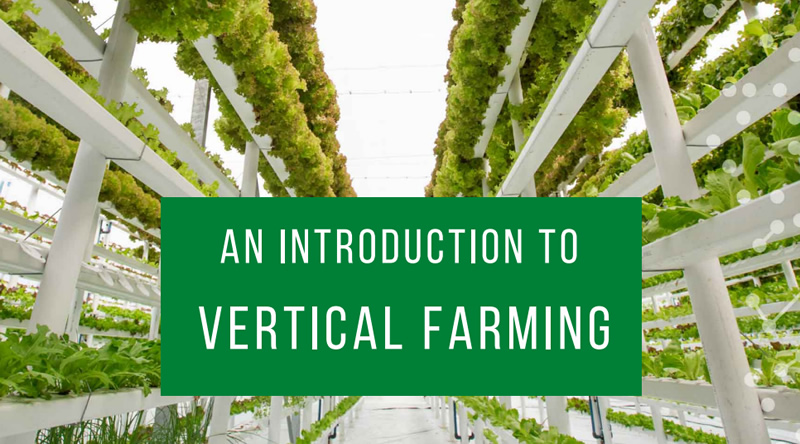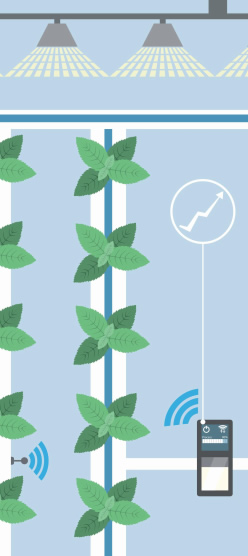James Lloyd-Jones is the Founder and CEO of Jones Food Company, a UK-based vertical farming company. We caught up with him to find out how the sector has developed in recent years.

Talk us through vertical farming technology and the specific way that it’s used
Traditional farming is normally on one plain. So either a field or greenhouse will have one level. Vertical farming, in our first farm, was 17 layers high. So we are 16 times better per square metre than a normal farming greenhouse in that respect.
And effectively you’re flooding trays with nutrient rich water, capturing that water, taking it back, re-mixing it, treating it and then putting it back in. So you’re far more water efficient.
You’re also bringing down the growing cycles. So on some of our products, we’re nearly three times quicker than a greenhouse to grow.
And you don’t have any external weather issues to deal with, so you can be very controlled and grow everything to spec over and over, year round.
How have you noticed the industry grow and change in the past few years?
In 2009 it really ballooned in Japan because of the Fukushima disaster. And they didn’t want to eat nuclear radiated food, or the perception of nuclear radiated food. So it’s been quite big in Asia.
I think it’s really revved up in the last 18 months more so than the last 10 years. It’s probably just been bumbling along on the peripherals of agriculture.
That’s changed a bit with some very large investments going into the American market especially, and some European players.
I think with COVID it’s starting to be more acute on people’s radar, specifically with food supply security, and, and also there seems to be a high nationalization of people wanting to have food that’s grown and consumed in their own countries.

What kind of problems in general does vertical farming solve?
Well supply security, year round supplies are so important. You can make vertical farming carbon neutral. Farming is the largest polluter, especially of freshwater and Co2 emissions, in the world. It also ensures that you take away the need for migrant labor.
In the UK it’s a big thing, not being able to get enough pickers in the soft fruit season, and you probably see that in the Middle East where they can’t bring the migrant labor in to look at the polytunnels because of COVID and because of the high heat. You’re getting rid of those sorts of social economic problems farming can bring.
If anybody reading this was thinking that they’d like to try and introduce vertical farms to their region, what do they need to consider?
You need a route to market. It is still, in reality, quite a new industry. There’s lots of vertical farms with different technology. I would only go with the vertical farms that grow, produce and sell and do everything themselves, don’t just buy technology because they won’t be there to support you.
And there really is a very, very big skills gap in vertical farming, from hobbyists that can do a container size to companies that are now investing millions in upskilling staff to take them away from greenhouses. So I think the biggest challenge would be the staff and the experience in running a farm if they were to put it up in their own cities or countries.
Where do you see it going in terms of how the technology might be refined over let’s say, the next 10 years?
From my personal perspective, we can be even bolder. 10 years is a long time away. I think in the next 18 months to two years, you’ll see some advances and especially what we’re bringing out. What we’ve effectively built is the iPhone one, and now we’re building the iPhone eight, there’s a big jump.
So I think you’re going to start seeing great greenhouses and vertical farms competing on CAPEX, so you’ll have to go ‘well why build a greenhouse which needs a lot of space and different controls, just build a vertical farm which needs less space, and we can still get the same output per annum out and use less people’ . So I can see that happening in the next 18 months, 24 months. And that will be game-changing, I think in horticulture worldwide.
Let’s be fair, everyone wants to be doing a Silicon Valley tech company, and we’re talking about how we can change the world with growing nutritionally.
What kind of amount of produce and how much can you produce with X amount of space and X amount of water and power?
Without giving too many trade secrets, how you can be completely carbon neutral, where they’re set up between solar and battery. So for five megawatts of solar, and a megawatt battery standby, you can be carbon neutral on a large scale.
With the water, we use the equivalent that a two bedroom flat would use, to grow enough to cover 26 tennis courts. So that’s too bad, two bedroom flat per day. So we do a lot of water capture water purification. So in the UK there’s rainwater, but in the Middle East, rainwater is not going to really be a factor.
But that’s fine, because we we capture our macro micro humidity and bring that through. So so water, we’re very, two bedroom flat is equivalent to what we use and power. So and then on size depends on what you grow.
Because you can grow very high value light crops, that you’ll go well, you probably produce 120 tonnes a year, or you can produce very heavy low value crops, and you may get like 600 tonnes a year. So it all depends on the crop type that you’re growing, which will determine your annual output.
Do you have any examples that you can say of places you have set up in other countries?
We’ve got a slightly different model to everyone else because we don’t sell, we only look to do joint ventures or licensing with local partners. We don’t see it as fortunate to just sell technology. It’s very short termism.
If you’re going to work with a Middle East partner, for instance, you want it to be a 20 year partnership, both parties, where we provide technology and they have a route to market.
Because our technology and our R&D is always improving, our partner would get the benefit if you can increase your yield by 5%. You know that that’s free money for them or free crop. So that’s why we see the partnership model being far superior.
Find out more at jonesfoodcompany.co.uk.
